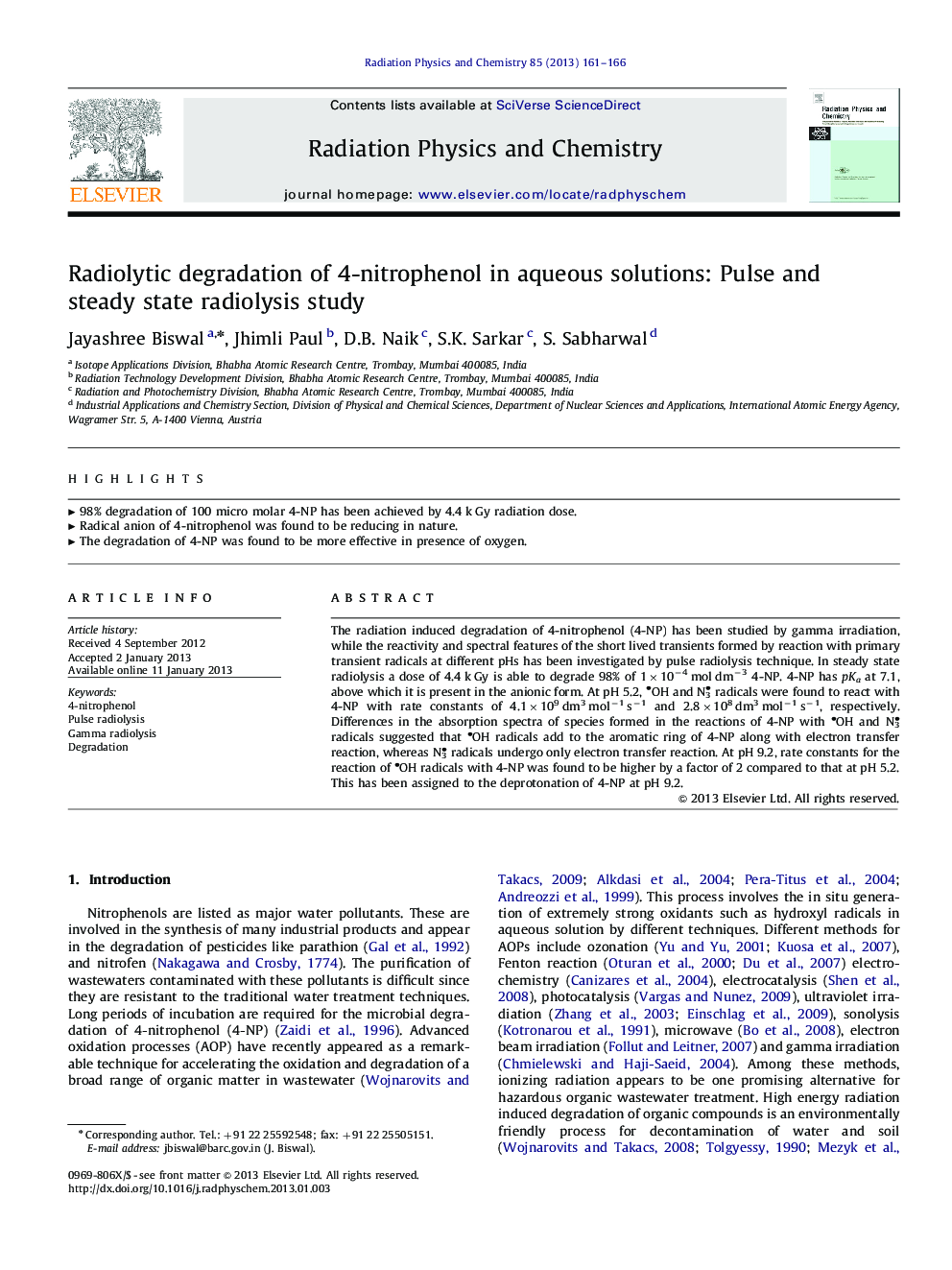| کد مقاله | کد نشریه | سال انتشار | مقاله انگلیسی | نسخه تمام متن |
|---|---|---|---|---|
| 1886258 | 1533539 | 2013 | 6 صفحه PDF | دانلود رایگان |

The radiation induced degradation of 4-nitrophenol (4-NP) has been studied by gamma irradiation, while the reactivity and spectral features of the short lived transients formed by reaction with primary transient radicals at different pHs has been investigated by pulse radiolysis technique. In steady state radiolysis a dose of 4.4 k Gy is able to degrade 98% of 1×10−4 mol dm−3 4-NP. 4-NP has pKa at 7.1, above which it is present in the anionic form. At pH 5.2,
• OH and N3
• radicals were found to react with 4-NP with rate constants of 4.1×109 dm3 mol−1 s−1 and 2.8×108 dm3 mol−1 s−1, respectively. Differences in the absorption spectra of species formed in the reactions of 4-NP with
• OH and N3
• radicals suggested that
• OH radicals add to the aromatic ring of 4-NP along with electron transfer reaction, whereas N3
• radicals undergo only electron transfer reaction. At pH 9.2, rate constants for the reaction of
• OH radicals with 4-NP was found to be higher by a factor of 2 compared to that at pH 5.2. This has been assigned to the deprotonation of 4-NP at pH 9.2.
► 98% degradation of 100 micro molar 4-NP has been achieved by 4.4 k Gy radiation dose.
► Radical anion of 4-nitrophenol was found to be reducing in nature.
► The degradation of 4-NP was found to be more effective in presence of oxygen.
Journal: Radiation Physics and Chemistry - Volume 85, April 2013, Pages 161–166